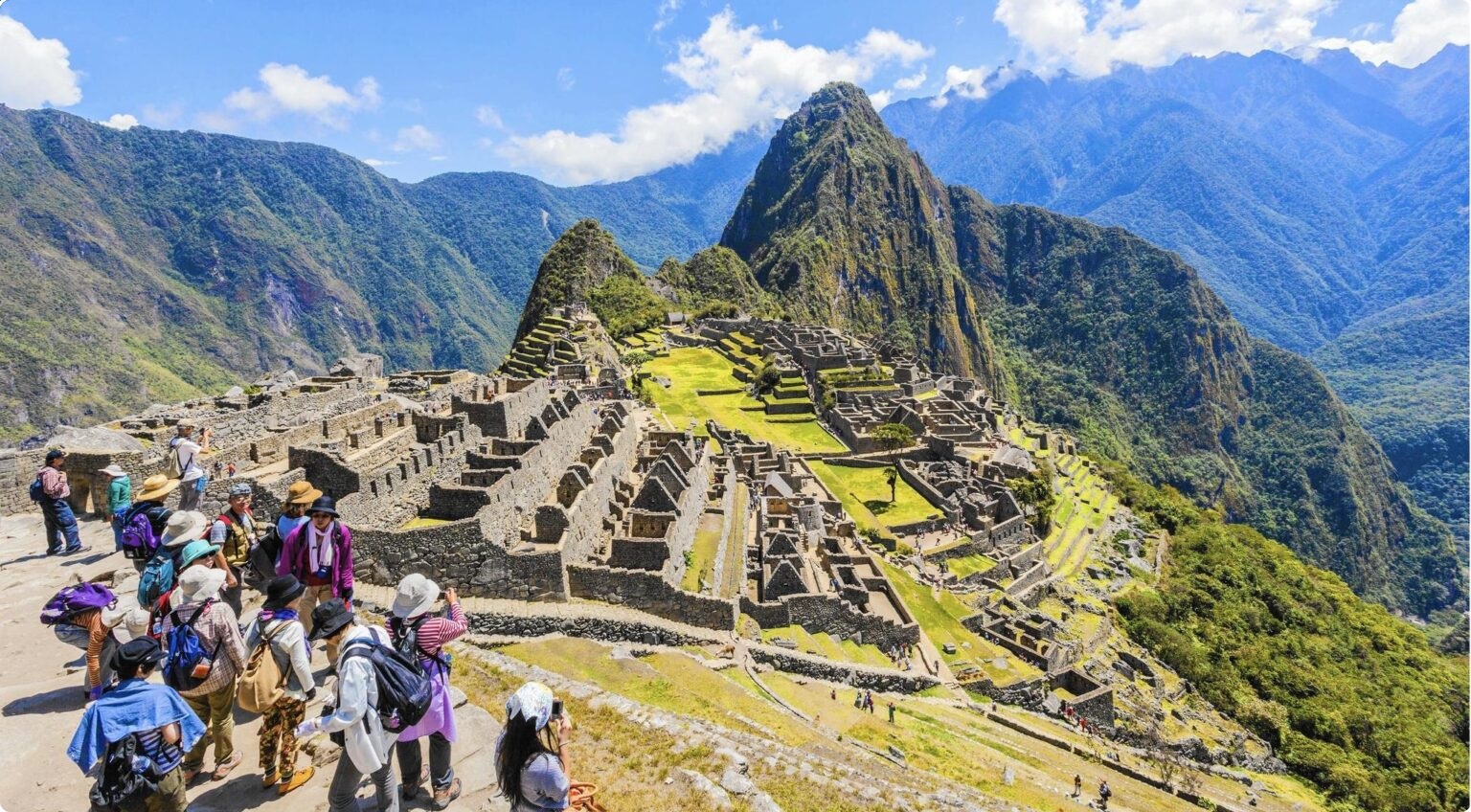(Cusco Travel Tips) – Best time to go to Machu Picchu, the ancient Incan city perched high in the Andes Mountains of Peru, is one of the world’s most iconic and mysterious archaeological sites. With its breathtaking scenery, rich history, and mystical allure, it draws travelers from across the globe.
However, the timing of your visit can greatly impact your experience. In this guide, we’ll explore the best times of year to visit Machu Picchu, considering factors such as weather, crowds, and special events, so you can plan your trip for an unforgettable adventure.
Best time to go to Machu Picchu
Dry Season (May to September)
The dry season, which runs from May to September, is widely regarded as the best time to visit Machu Picchu. During these months, the weather in the region is cooler and drier, making it ideal for trekking and exploring the ruins. The temperature typically ranges between 10°C (50°F) in the mornings and evenings to around 20°C (68°F) during the day, with clear skies offering spectacular views of the surrounding mountains and valleys.
One of the biggest advantages of visiting during the dry season is the minimal rainfall, which reduces the likelihood of clouds obscuring the iconic views of Machu Picchu. The drier weather also makes the trails, including the famous Inca Trail, more accessible and safer for hiking. However, this period is also the peak tourist season, meaning that the site can become crowded, especially in July and August. To avoid the largest crowds, it’s best to arrive early in the morning or late in the afternoon.
Shoulder Seasons (April and October)
April and October are considered the shoulder seasons at Machu Picchu, falling just before and after the dry season. These months offer a great balance of good weather and fewer crowds, making them an excellent choice for travelers who prefer a more tranquil experience.
During the shoulder seasons, the weather is still relatively dry, though there may be occasional showers, particularly in October as the wet season approaches. Temperatures are similar to those in the dry season, with pleasant conditions for exploring the site and hiking the surrounding trails. Additionally, the vegetation is lush and green after the rainy season, creating a vibrant backdrop for your visit.
The shoulder seasons also tend to see lower prices for flights and accommodations compared to the peak season, making them a more budget-friendly option. Overall, April and October offer a sweet spot for those seeking good weather without the intensity of peak-season crowds.
Wet Season (November to March)
The wet season in Machu Picchu, from November to March, brings frequent rainfall, which can make the trails muddy and slippery and the skies cloudy. Despite these challenges, visiting during the wet season has its own unique appeal, especially for those who prefer a more solitary experience.
One of the key benefits of visiting during the wet season is the reduced number of tourists. The site is much quieter, allowing for a more intimate and contemplative experience as you explore the ancient ruins. Additionally, the landscape is incredibly lush and green, with vibrant flora and fauna brought to life by the rains.
However, there are some drawbacks to consider. The heavy rainfall can sometimes cause landslides, leading to temporary trail closures and disruptions in travel plans. The Inca Trail is typically closed for maintenance in February, so if trekking is a key part of your visit, it’s best to avoid this month. It’s also important to be prepared for unpredictable weather by bringing waterproof gear and dressing in layers.
Special Events and Considerations
When planning your trip to Machu Picchu, it’s worth considering special events and cultural festivals that take place throughout the year. One of the most significant is Inti Raymi, the Festival of the Sun, held on June 24th in Cusco. This ancient Incan celebration honors the Sun God and features elaborate ceremonies, traditional music, and dance. Visiting Machu Picchu around this time allows you to immerse yourself in the rich cultural heritage of the region, though it’s also one of the busiest times of the year.
Another consideration is the timing of your visit within the day. Machu Picchu opens at 6 a.m., and arriving early allows you to experience the site with fewer people and potentially catch the sunrise over the mountains. Late afternoon visits can also be rewarding, with softer light for photography and a quieter atmosphere as the crowds begin to thin out.
Best time to go to Machu Picchu: Conclusions
The best time to visit Machu Picchu depends on your personal preferences and priorities. If you’re looking for the best weather and don’t mind sharing the site with more visitors, the dry season from May to September is ideal. For those who prefer a balance of good weather and fewer crowds, the shoulder seasons of April and October are excellent choices. If solitude and lush scenery are your priorities, and you’re prepared for wet conditions, the wet season can offer a unique and serene experience.
No matter when you choose to visit, Machu Picchu is a destination that promises to leave a lasting impression. With its awe-inspiring beauty and rich history, this ancient wonder of the world is a place that every traveler should experience at least once in their lifetime.
You might be also interested in:
- Prevent altitude sickness in Cusco
- Cusco Airport Transfer Service
- Travel Packages to Machu Picchu
- Cusco-Ollantaytambo Transfers

